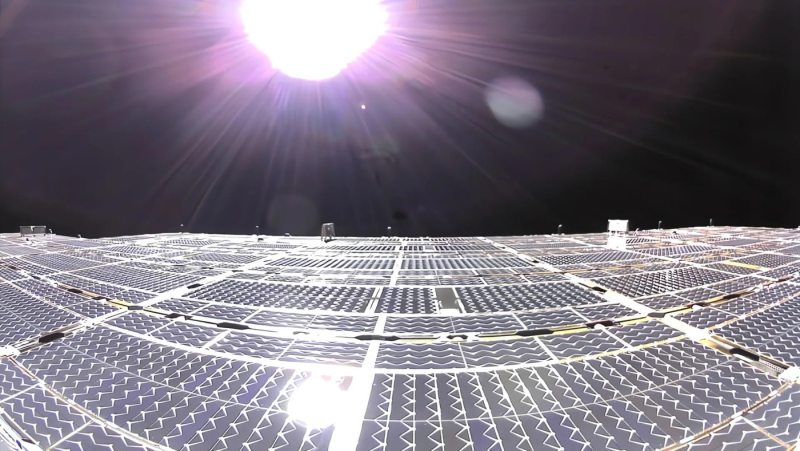Last month, AST SpaceMobile successfully launched five of its BlueBird satellites into low-Earth orbit using rival SpaceX’s Falcon 9 rocket. They are designed to provide high-speed Internet to standard smartphones anywhere in the world. The deployed antenna area of each BlueBird spacecraft is a record 65 m2. This antenna size makes it possible to reduce the total number of satellites in orbit.

Image source: AST SpaceMobile
Today, AST SpaceMobile CEO Abel Avellan posted on social media X an image taken from one of the BlueBird satellites with the comment “The first BlueBird is getting ready to go.” AST SpaceMobile’s first priority is to begin testing the satellites’ cellular communications capabilities in December together with its two main partners, AT&T and Verizon.
The company is ahead of schedule, Avellan said, and BlueBird’s satellites have the largest-ever commercial spacecraft antennas, measuring 65 square meters, specifically designed to deliver cellular broadband from space. “Size matters!” – said Avellan.
At this time, the FCC has only granted AST SpaceMobile a limited license to monitor and control the BlueBird constellation. The company has yet to receive regulatory approval to test and commercialize the satellites to transmit data to standard consumer phones.
Despite the record-breaking antenna size, AST SpaceMobile will have to launch dozens, if not hundreds, of BlueBirds to provide reliable satellite coverage. BlueBird’s first five satellites can only provide two 15-minute coverage windows per day in the United States.

Ultimately, SpaceMobile’s AST constellation will include 168 spacecraft, some of which will be significantly larger than the current BlueBirds. The company has already begun production of 17 BlueBird Block 2 satellites, which will receive antennas with an area of 223 m2. “We’re just getting started,” Avellan noted during the AST SpaceMobile launch livestream. “Our next generation of satellites will be three and a half times larger.”
This news is undoubtedly upsetting to many astronomers and dark sky advocates. The new satellites will be among the brightest objects in the night sky, which astrophysicists say “should give us all something to think about.”